Cottam is a residential area north of Preston town centre. Once a landscape of open fields, in recent years it has become a large housing development. A number of heritage artworks have been placed throughout the area, created by David Cudworth, Thompson Dagnall and Alan Dawson.
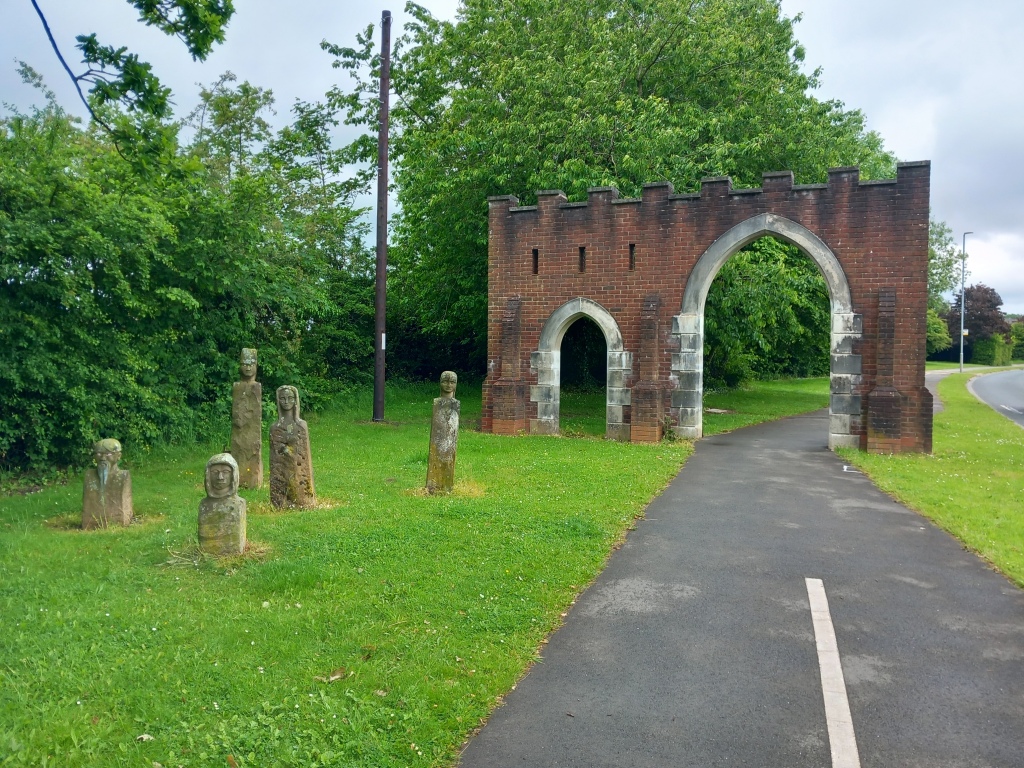
The sculptures have a Medieval inspired theme. It’s not clear why this was chosen, but there are some links to Medieval history in Cottam. Earthworks from Medieval ridge and furrow farming survived in the area until the 1950s, after which they were all ploughed out. Cottam Hall, owned by generations of the Haydock family, was a Medieval half-timbered building surrounded by a moat. It was demolished in the 1850s and Cottam Hall Lane, which once led to the building, remains in place today. A Medieval cross base also survives, and can be seen at the end of the guided walk below.
There is parking at Cottam Community centre, just off Haydock Lane, where the walk starts. From the car park, turn left and head down Haydock Lane. Look out for a path on the right (just before the bus shelter) which leads to the first sculpture, War Horse to Water.
War Horse to Water
War Horse to Water by was commisioned by Lancashire County Council. Created by Thompson Dagnall out of millstone grit, it features a Medieval armoured horse’s head. Waves lap around it, as if it is swimming through a river. The sculpture has been in place for a while now, and the blue of the waves has started to erode. The stone head itself is in good condition, and lichens have started to colonise it. Thompson Dagnall works in both wood and stone, and many of his creations are on display throughout the county. He frequently produces larger than life nature pieces, or works on a historical themes (for examples of both of these, see our page on Astley Hall Park Curiosities here).
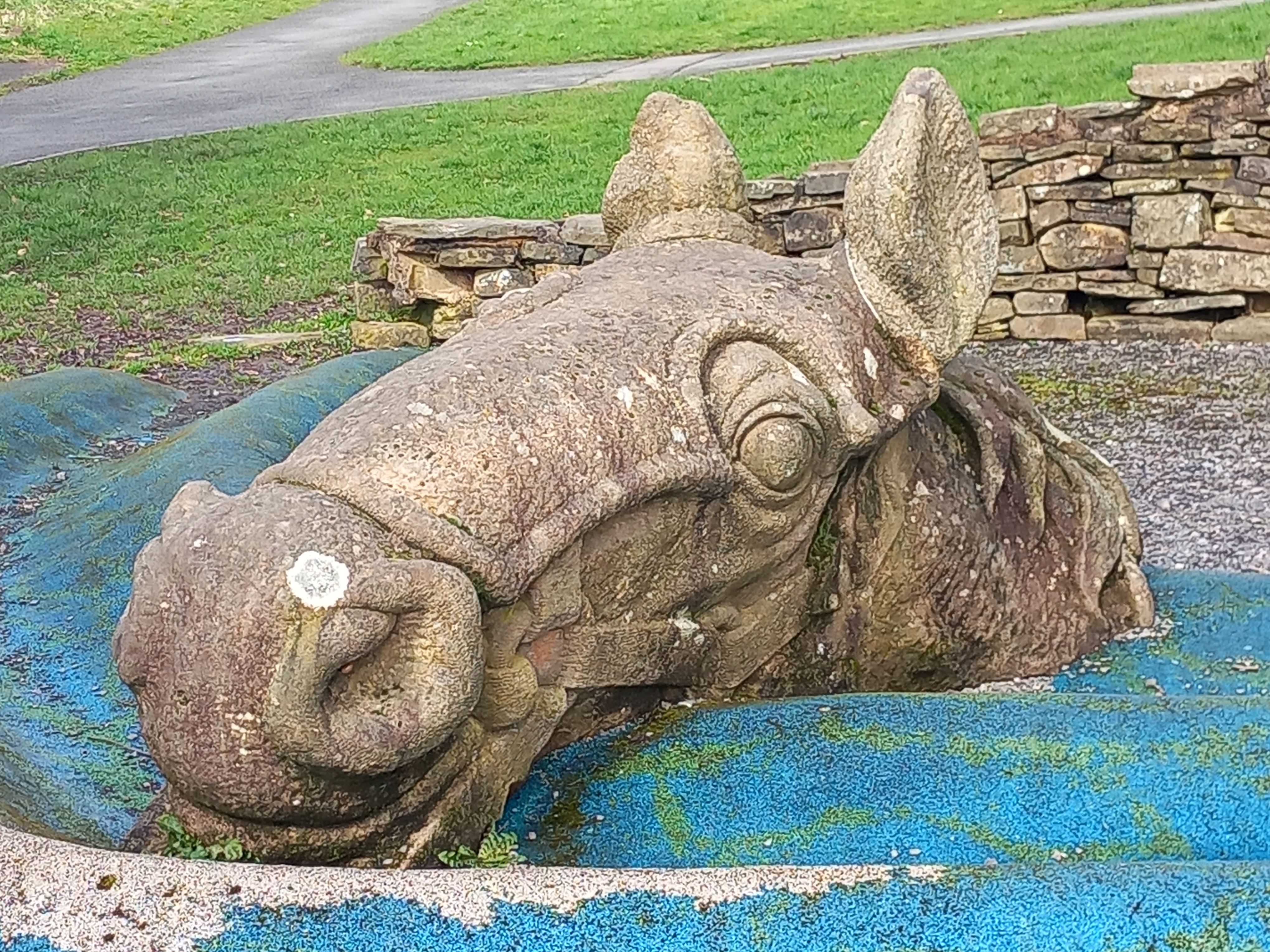
The King and Talbots at the King’s Maze
A short path leads from War Horse to Water to a circle known as the King’s Maze. This is a small circular maze and features carvings by sculptor David Cudworth. The works were funded by the Commission for New Towns in 1996. For the piece, Cudworth used three gateposts, a design trope that re-occurs throughout a lot of his art. At the maze entrance are twin figures of Talbot hounds, a breed used for hunting in Medieval times but that is now extinct. Little is known about this breed, only their depiction as white-coated, long-eared and short-legged dogs in Medieval paintings give us a clue to their appearance. Cudworth’s dogs both wear collars with a cross pendant, and face each other, snarling. At the centre of the maze stands a solitary king. The maze itself is well kept, with the grass kept low so that the visitor can try to find their way to the middle.
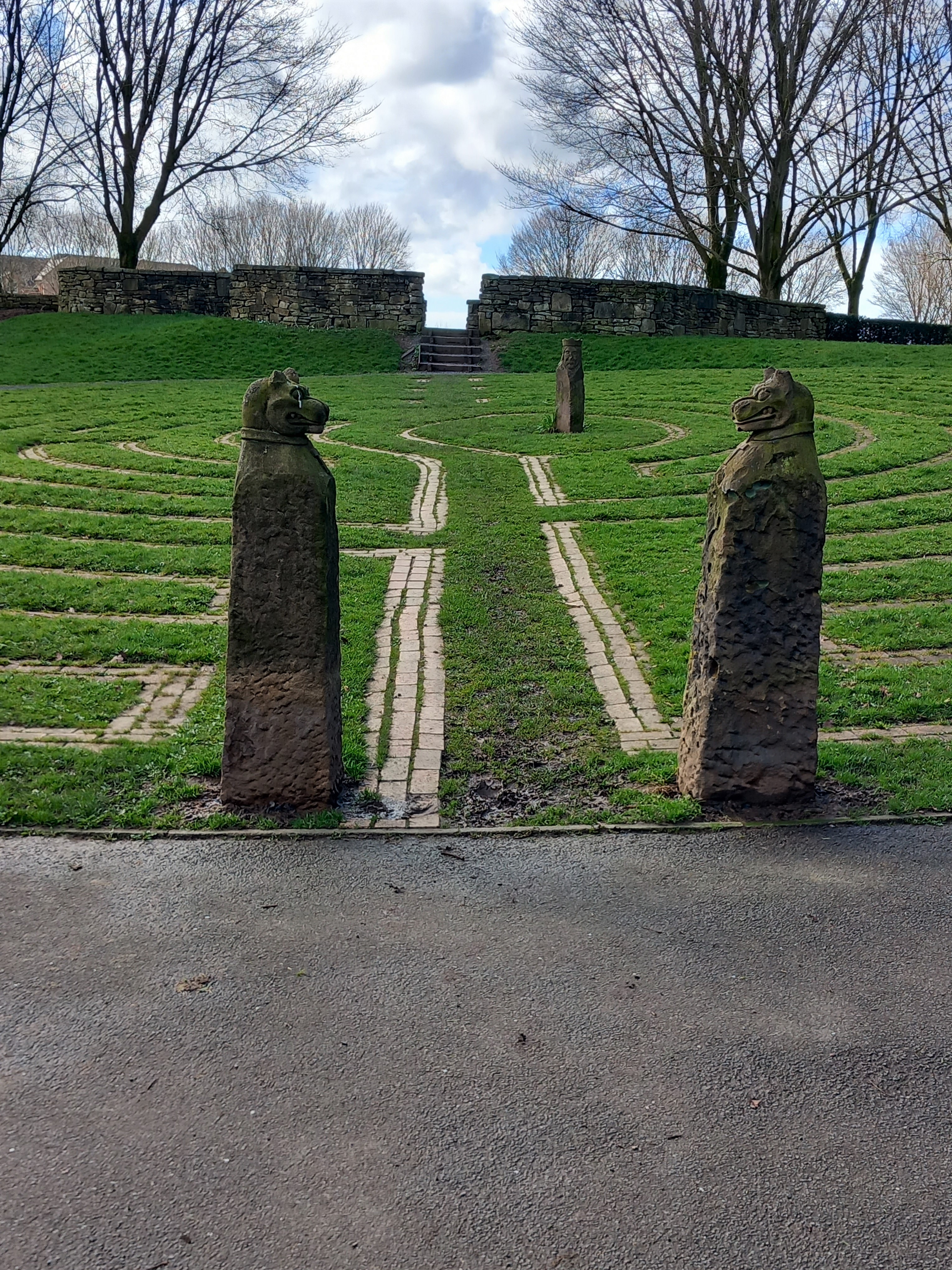
Head for the steps beyond the maze to enter a larger circular space. Beech trees form a perimeter around it. Keep left and follow the curve of trees until you reach a drystone wall structure that descends via a series of ramps to the road named Greenside. On the opposite side of the road are two metal figures, facing each other.
‘Medieval Figures’
The next sculptures on the route are by Alan Dawson which he named ‘Medieval Figures‘. They were commissioned by housing company English Partnerships in 2016. The female one has perhaps more of a classical Medieval look, with long flowing robes and a tall conical hat known as a hennin. This type of hat for women became popular in Europe from the 1430s onwards. The male sculpture has the look of a wizard, with long flowing beard and pointy hat- more fantasy or fairy tale inspired than Medieval.

Head between the figures down the path to find a second identical pair on Thornthwaite Road. Turn right on Thornthwaite Road and follow it down until it reaches Cottam Way. Turn right on Cottam Way and follow the footpath, keeping on the right-hand side of the road.. After a short while you will reach a set of steps going up to a cone made from stone. Carry on down Cottam Way to reach a set of arches known as Cottam Gateway.
Cottam Gateway Figures
Just beyond the arches are a set of five Medieval style figures, again carved from gateposts by David Cudworth, set up by the Commission for New Towns in 1998. Two are women, one of which is hooded, and three are men, one of which is hooded. A very tall male figure could be wearing a clerical hat of some kind. The passage of time since their installation means that lichen has been able to colonise the stone. Cudworth took inspiration from Medieval manuscripts in the design of the figures. A second set are just across the road which will be looked at on the return journey.
Continue on the path further down Cottam Way. At the roundabout cross over Cottam Way. and head towards the Medieval cross base with its restored cross.
Thomas Myres Monument
Two plaques tell us that monument originally stood in front of Lea Lodge (now known as Clock House) on nearby Lea Road. Lea Lodge was the home of Thomas Harrison Myres and wife Catherine Mary. Myres worked as a railway architect, designing some eighteen stations for the London, Brighton & South Coast Railway. He is remembered locally as a pioneer in the restoration of roadside crosses, being responsible for sixteen in Lancashire. When he died the cross and plaque were erected as a monument to Thomas and Catherine, and dedicated to them on 8th July 1929. The current monument, which now sits on top of two large circular bases, was created in 2002. Interestingly the Medieval base seems to have had a vertical slot cut into it at some time in the past, for reasons unknown.
Head back to the right hand side Cottam Gateway monument, passing another steeple monument on the way.
At the right hand gateway are another five of David Cudworth’s gateposts sculptures, all male. Three of them appear to be monks wearing hoods, and once again there is a tall figure wearing a what could be a bishops hat.
Cross over the road and retrace your steps back to Cottam Community Hall car park.
There is a final set of Cottam sculptures created nearby by David Cudworth in commemoration of the Canberra air crash that occurred in Cottam in 1952. This will be the subject of a future post here on Lancashire Past. Thompson Dagnall has created a Roundhead and Cavalier carving nearby at Fulwood, in remembrance of the Battle of Preston, the final decisive battle of the Civil War (see our page on it here).
Site visited by A. and S. Bowden 2024
Access
Park at Cottam Community Centre off Haydock Road
Nearby
Thompson Dagnall’s Civil War Sculpture
References
Cottam Hall, Site T, Near Preston, Central Lancashire, Archaeological Assessment Jon Chandler (2003) Oxford Archaeology North. Available as a free pdf document online.
sculpturecarving.com/war-horse-to-water
artuk.org/discover/artworks/war-horse-to-water-309183
artuk.org/discover/artworks/king-and-talbots-309081
en.wikipedia.org/wiki/Talbot_(dog_breed)
artuk.org/discover/artworks/medieval-figures-309093
en.wikipedia.org/wiki/Hennin
artuk.org/discover/artworks/cottam-gateway-figures-309041
artuk.org/discover/artworks/thomas-myres-monument-314890
en.wikipedia.org/wiki/Thomas_Myres
historicengland.org.uk/listing/the-list/list-entry/1165091?section=comments-and-photos
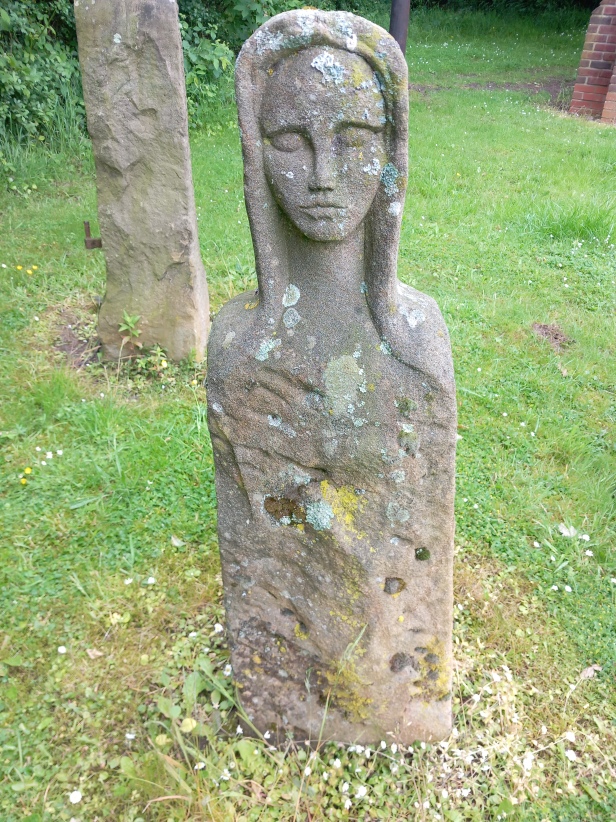

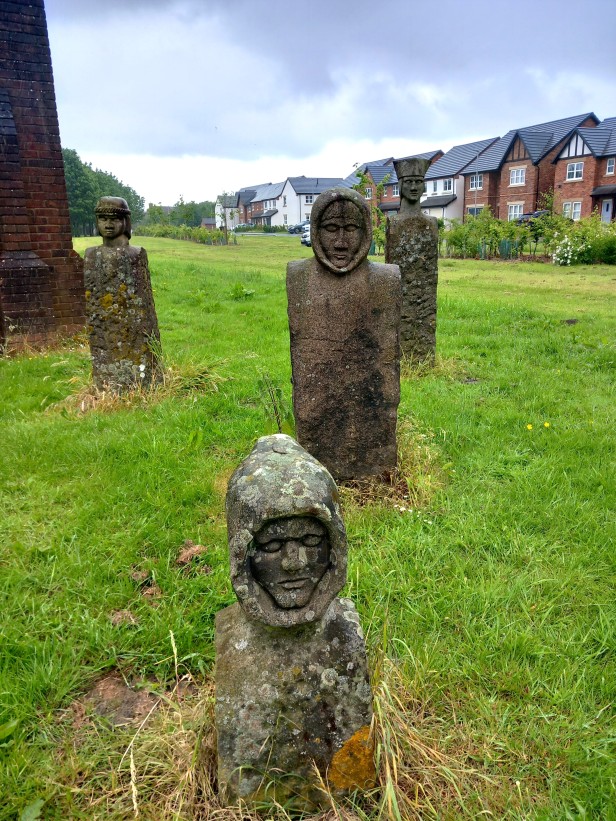
Comments are closed.